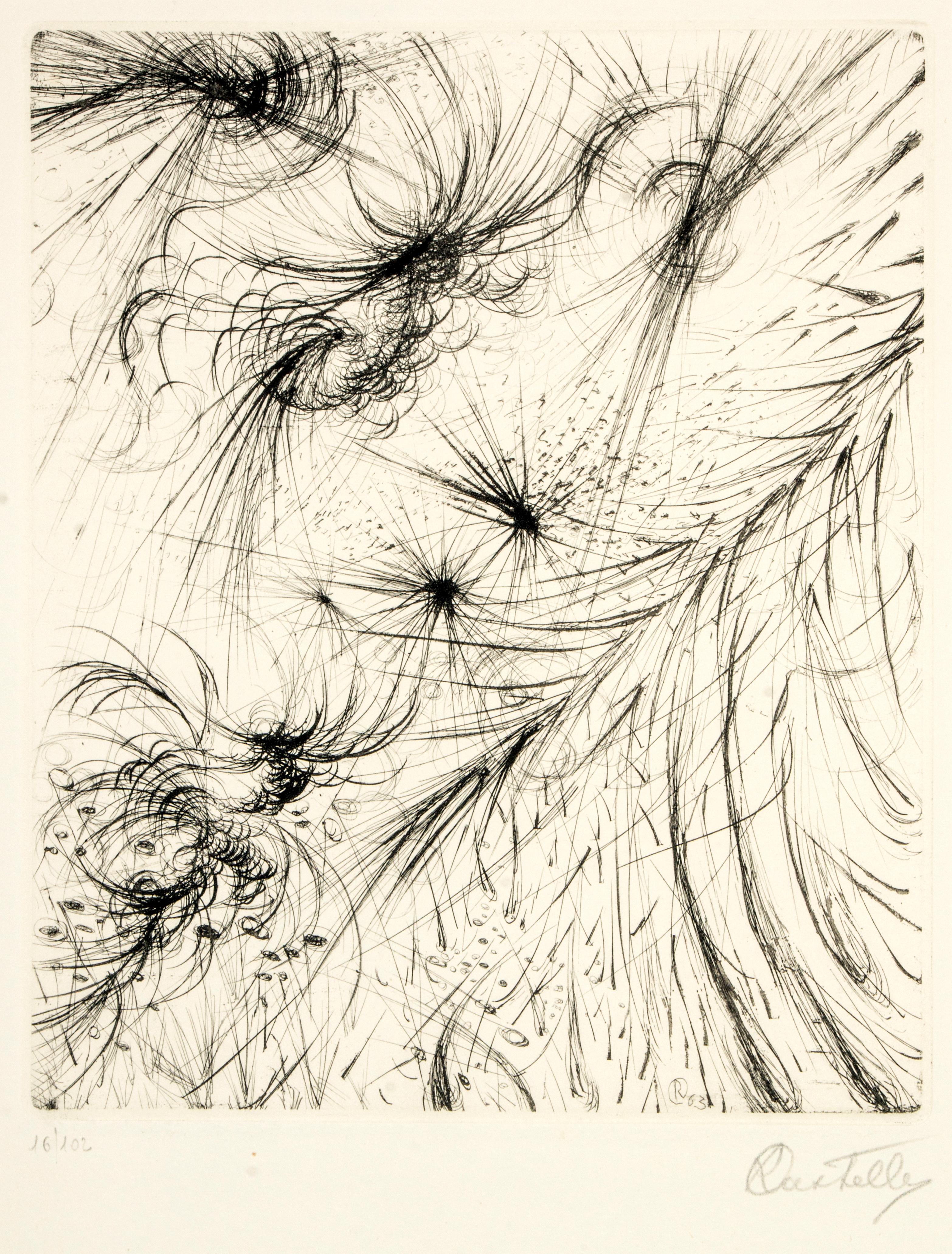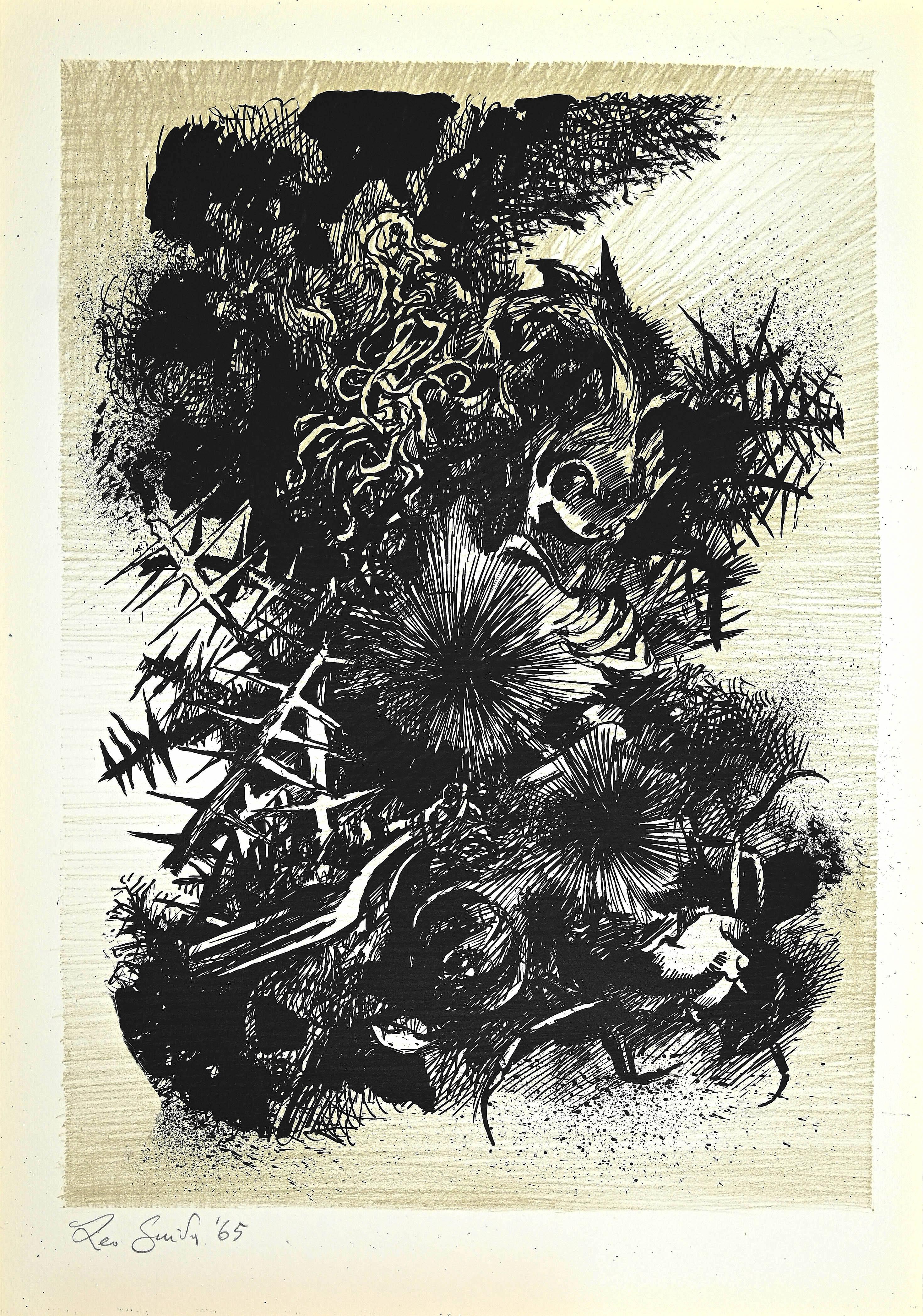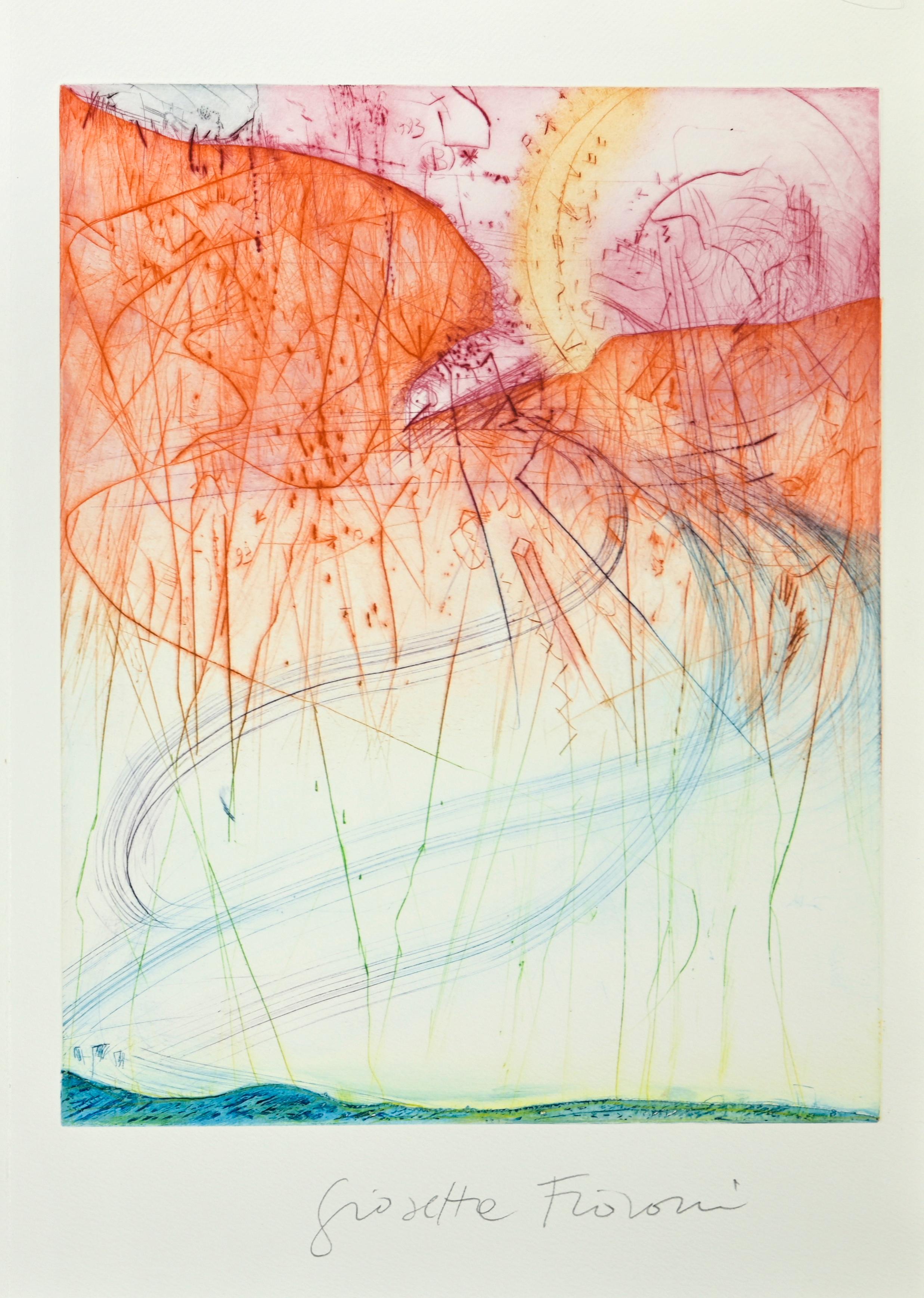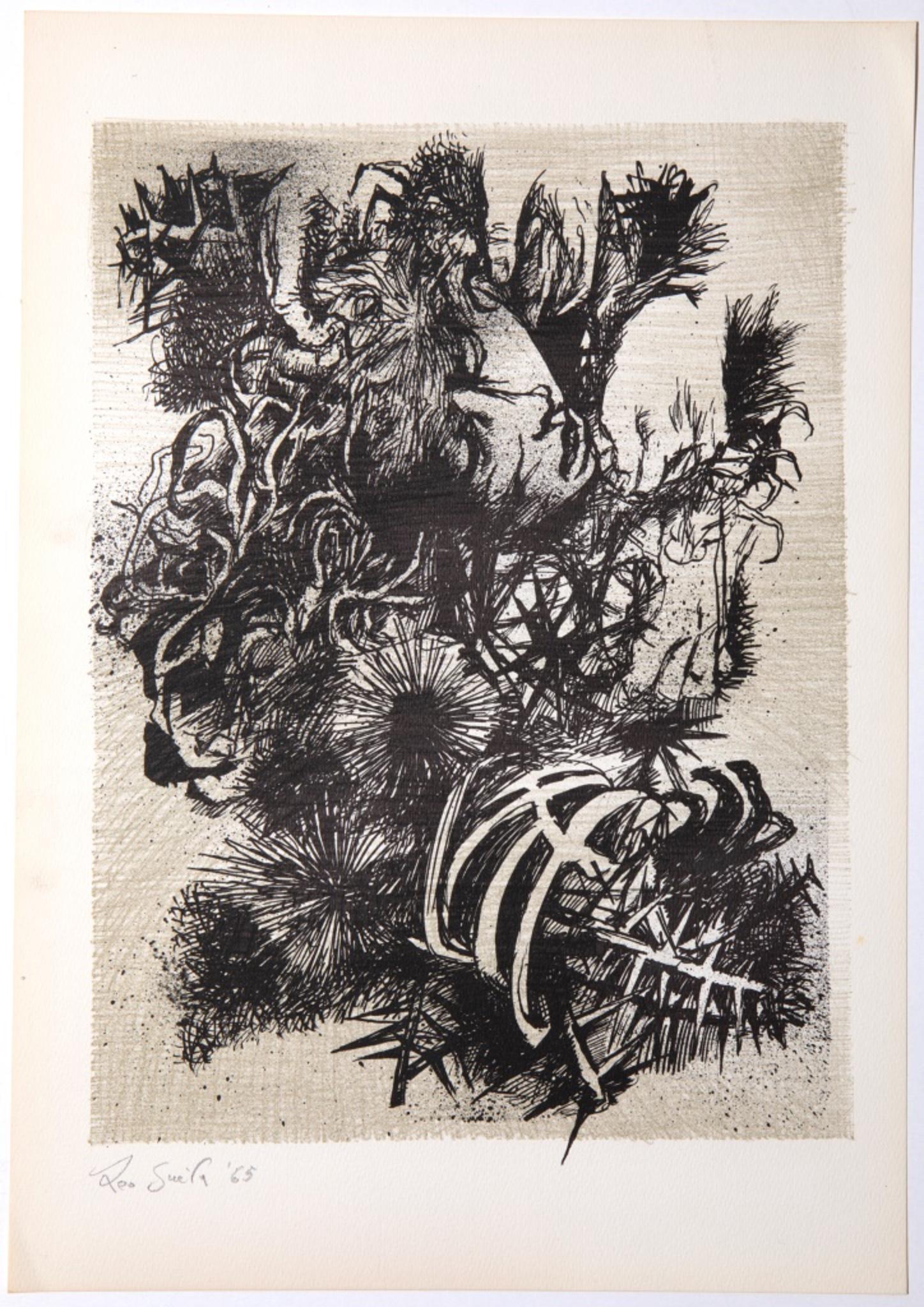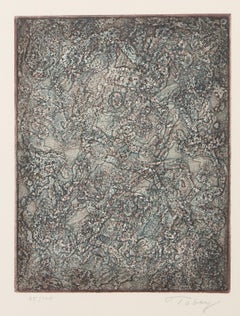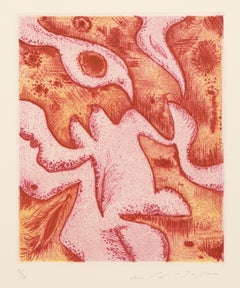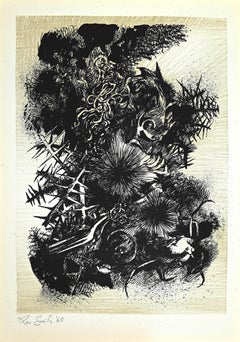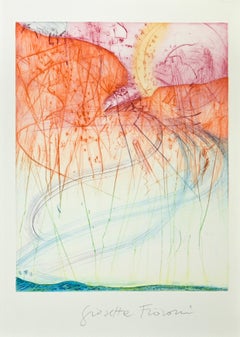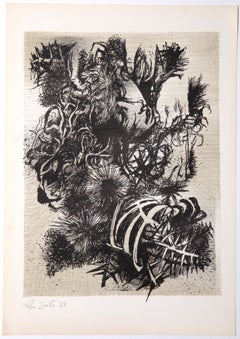Alfonso OssorioUntitled VI, Abstract Etching by Alfonso Ossorio1984
1984
About the Item
- Creator:Alfonso Ossorio (1916, Filipino, American)
- Creation Year:1984
- Dimensions:Height: 31 in (78.74 cm)Width: 21 in (53.34 cm)
- Medium:
- Movement & Style:
- Period:
- Framing:Framing Options Available
- Condition:
- Gallery Location:Long Island City, NY
- Reference Number:Seller: RO559671stDibs: LU4661474303
Alfonso Ossorio
Abstract Expressionist Alfonso Ossorio grappled with themes of childhood, birth, sexuality, mythology and religion in his vivid art. Before becoming close friends with artists Jackson Pollock, Lee Krasner and Jean Dubuffet, he inherited a sugar fortune and amassed an art collection that became part of the Fogg Museum at Harvard University. It includes works by artist Thomas Derrick, sculptor Eric Gill, wood engraver Philip Hagreen, illustrator Denis Tegetmeier and artist and poet David Jones.
Born in 1916, Ossorio grew up in Manila in the Philippines. He later attended a Catholic boarding school in England and settled in the United States in 1930. He enrolled at Harvard in 1934 and, in 1937, launched an art career with cover designs for publications of work by poet Arthur Rimbaud. He received a bachelor’s degree in 1938 and complemented his art history studies with studio art classes at the Rhode Island School of Design. After his first solo exhibition at the Wakefield Gallery in 1941, Ossorio served the American Armed Forces until 1946. He met his lifelong partner, Ted Dragon, in 1948, as well as Pollock who guided his exploration of Abstract Expressionism.
Ossorio’s major works included a mural commissioned for the Chapel of St. Joseph the Worker in the Philippines. His return to his home country fueled a search inwards as a source of inspiration.
Ossorio bought an East Hampton, New York, estate, known as the Creeks, in which he housed Dubuffet’s entire Compagnie de l’Art Brut collection. By the late 1950s, Ossorio was heavily involved in curating and organizing exhibitions including shows featuring Pollock, Dubuffet, Willem de Kooning, Hans Hofmann, Mark Rothko and David Smith.
In the 1960s, Ossorio created his best known works. These “congregations,” as he called them, are assemblage sculptures of shells, pearls, feathers and driftwood playing on the connections between life and decay, and the raw and the refined.
Ossorio’s art is in collections around the world, including the Metropolitan Museum of Art, the Museum of Modern Art and the Whitney Museum of American Art. International exhibitions featuring his work have been held at the National Gallery of Modern Art in Scotland and the National Museum of Modern Art in Japan as well as the L’Art Brut Museum in Switzerland and the 2019 Singapore Biennale.
On 1stDibs, find a collection of Alfonso Ossorio prints and multiples.
- ShippingRetrieving quote...Shipping from: Long Island City, NY
- Return Policy
More From This Seller
View All1980s Abstract Expressionist Abstract Prints
Etching
1980s Abstract Expressionist Abstract Prints
Etching
1970s Abstract Expressionist Abstract Prints
Etching
1950s Surrealist Prints and Multiples
Etching, Aquatint
1950s Surrealist Prints and Multiples
Etching
1960s Abstract Expressionist Landscape Prints
Etching
You May Also Like
1960s Abstract Abstract Prints
Drypoint, Etching
1960s Abstract Abstract Prints
Etching
1970s Contemporary Portrait Prints
Etching, Aquatint
1960s Contemporary Abstract Prints
Etching
1950s Abstract Expressionist Abstract Prints
Lithograph
1950s Abstract Expressionist Abstract Prints
Lithograph
Read More
Romare Bearden’s Humanity Infuses His Bright, Bold Art
Through collage, painting and printmaking, the artist foregrounded Black life in America in revolutionary new ways.
Chryssa’s 1962 Neon Sculpture Was Way ahead of the Art-World Curve
By working with lettering, neon and Pop imagery, Chryssa pioneered several postmodern themes at a time when most male artists detested commercial mediums.
